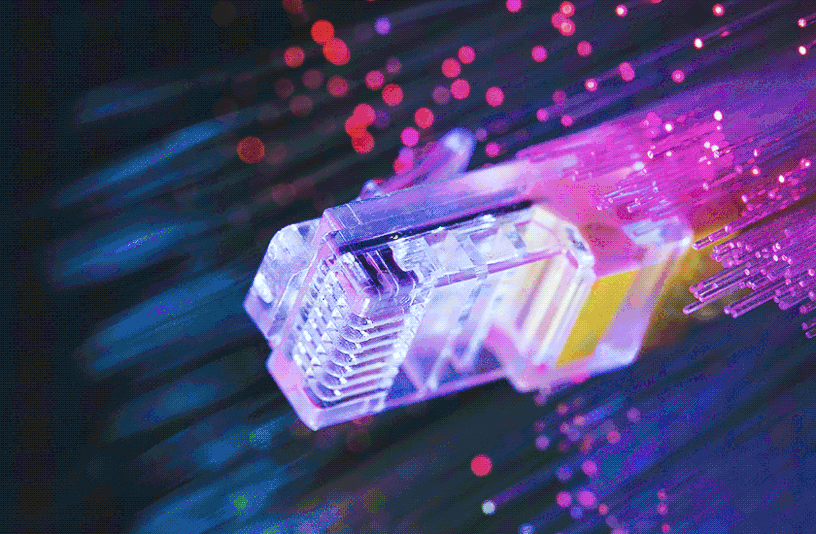Introduction
The Optical Data Cable Market is experiencing significant growth and innovation driven by the increasing demand for high-speed data transmission, reliable connectivity, and bandwidth-intensive applications. Optical data cables, also known as fiber optic cables, are integral components of modern telecommunications networks, data centers, and broadband infrastructure, enabling the efficient transmission of digital information over long distances. This overview provides insights into the overview, trends, opportunities, analysis of growth factors, and competitive strategies shaping the Optical Data Cable Market.
Overview
The Optical Data Cable Market encompasses a wide range of fiber optic cable products designed for various applications, including:
- Long-Haul and Metro Networks: High-capacity optical fiber cables deployed in long-haul and metro networks for telecommunications carriers, internet service providers (ISPs), and broadband operators to transmit data over vast distances with minimal signal degradation.
- Data Centers and Cloud Computing: Fiber optic cables used in data center interconnect (DCI) applications, intra-rack and inter-rack connectivity, and high-speed backbone links to support cloud computing, big data analytics, and content delivery networks (CDNs).
- Enterprise Networks: Fiber optic cables deployed in enterprise networks, campus environments, and local area networks (LANs) for high-speed data transmission, network backbone connectivity, and future-proofing infrastructure investments.
- Wireless Infrastructure: Optical fiber cables used in wireless infrastructure deployments, including 4G/5G base stations, small cell networks, and distributed antenna systems (DAS), to provide high-speed backhaul and fronthaul connectivity.
Trends
- Transition to Higher Speeds: The migration towards higher-speed optical data cables, such as 100G, 400G, and beyond, to meet the growing demand for bandwidth-intensive applications, streaming media, and cloud services.
- Deployment of Next-Generation Networks: The deployment of next-generation fiber optic networks, including fiber-to-the-home (FTTH), fiber-to-the-premises (FTTP), and passive optical networks (PONs), to enable gigabit-speed broadband access and support smart city initiatives.
- Emergence of 5G Networks: The rollout of 5G wireless networks driving demand for fiber optic backhaul and fronthaul solutions to support ultra-low latency, high-capacity connectivity for emerging 5G use cases, such as autonomous vehicles, augmented reality (AR), and virtual reality (VR).
- Advancements in Cable Design: Innovations in optical cable design, including bend-insensitive fibers, microducts, and air-blown fiber solutions, to facilitate easier installation, minimize signal loss, and improve network reliability and scalability.
Opportunity
- Infrastructure Investments: Increasing investments in broadband infrastructure, digital transformation initiatives, and smart city projects driving demand for fiber optic cables to support high-speed connectivity, IoT deployments, and digital services delivery.
- Cloud Computing and Edge Computing: The proliferation of cloud computing, edge computing, and IoT applications creating opportunities for optical data cables to provide high-speed, low-latency connectivity between data centers, edge locations, and end-user devices.
- International Connectivity: The expansion of submarine cable networks and international fiber routes to connect continents, regions, and emerging markets, facilitating global data exchange, international trade, and economic development.
- Industrial Applications: The adoption of fiber optic cables in industrial automation, manufacturing, and process control applications for high-speed data transmission, remote monitoring, and predictive maintenance in Industry 4.0 environments.
Receive the FREE Sample Report of Optical Data Cable Market Research Insights @ https://stringentdatalytics.com/sample-request/optical-data-cable-market/13631/
Market Segmentations:
Global Optical Data Cables Market: By Company
- Amphenol
- Siemens
- ABB
- Littelfuse
- Accelink Technologies Company
- HUBER+SUHNER
- Japan Aviation Electronics Industries
- Leoni AG
- Nanjing Huamai Technology Company
- Prysmian Group
- Leviton
- CORNING
- Legrand
- Axon Cable
- FATEK Automation Corp
- LEMO
- FEIG ELECTRONIC
- Motec GmbH
- HellermannTyton
- di-soric
- HARTING
- ATEN
- Black Box
- Smiths Interconnect
- Bayerische Kabelwerke
Cavotec - Oki Electric Cable
- Northwire
- Rosenberger OSI
Global Optical Data Cables Market: By Type
- Single-Mode
- Multimode
Global Optical Data Cables Market: By Application
- Commercial Use
- Industrial Use
- Others
Regional Analysis of Global Optical Data Cable Market
All the regional segmentation has been studied based on recent and future trends, and the market is forecasted throughout the prediction period. The countries covered in the regional analysis of the Global Optical Data Cable market report are U.S., Canada, and Mexico in North America, Germany, France, U.K., Russia, Italy, Spain, Turkey, Netherlands, Switzerland, Belgium, and Rest of Europe in Europe, Singapore, Malaysia, Australia, Thailand, Indonesia, Philippines, China, Japan, India, South Korea, Rest of Asia-Pacific (APAC) in the Asia-Pacific (APAC), Saudi Arabia, U.A.E, South Africa, Egypt, Israel, Rest of Middle East and Africa (MEA) as a part of Middle East and Africa (MEA), and Argentina, Brazil, and Rest of South America as part of South America.
Click to Purchase Optical Data Cable Market Research Report @ https://stringentdatalytics.com/purchase/optical-data-cable-market/13631/?license=single
Analysis of Growth Factors
Several factors contribute to the growth of the Optical Data Cable Market:
- Increasing Bandwidth Demand: The exponential growth of digital data traffic, multimedia content, and internet usage driving demand for higher bandwidth and faster data transmission speeds, driving the adoption of fiber optic cables.
- Technological Advancements: Continuous advancements in fiber optic cable technology, including improvements in fiber materials, manufacturing processes, and transmission techniques, enhancing cable performance, reliability, and cost-effectiveness.
- Regulatory Support: Supportive regulatory frameworks, government incentives, and funding programs promoting broadband deployment, network expansion, and digital inclusion initiatives, fostering market growth and investment in optical data cable infrastructure.
- Cost Efficiency: The declining cost of fiber optic cables, driven by economies of scale, manufacturing efficiencies, and competition among suppliers, making optical data cables increasingly cost-competitive compared to copper-based alternatives.
Competitive Strategies
To maintain competitiveness and drive growth in the Optical Data Cable Market, companies employ various strategies:
- Product Innovation: Continuous innovation in cable design, materials, and manufacturing processes to develop next-generation fiber optic cables with improved performance, flexibility, and reliability.
- Market Expansion: Geographic expansion into new regions, emerging markets, and underserved areas to capitalize on growing demand for broadband connectivity, digital services, and infrastructure development.
- Partnerships and Collaborations: Strategic partnerships with telecommunications providers, network equipment vendors, and system integrators to offer end-to-end solutions, bundled services, and integrated network solutions.
- Vertical Integration: Vertical integration across the value chain, from fiber optic cable manufacturing and installation to network deployment and service provisioning, to control costs, quality, and delivery timelines.
- Customer Engagement and Support: Providing comprehensive pre-sales support, technical assistance, and after-sales service to customers, ensuring smooth deployment, operation, and maintenance of optical data cable infrastructure.
Conclusion
The Optical Data Cable Market is poised for robust growth driven by increasing demand for high-speed connectivity, digital transformation, and emerging technologies. By embracing key trends, capitalizing on growth opportunities, analyzing growth factors, and implementing competitive strategies, stakeholders in the Optical Data Cable Market can navigate the evolving landscape, drive innovation, and unlock new avenues for success in the digital age.
FAQs (Frequently Asked Questions)
- What are optical data cables? Optical data cables, also known as fiber optic cables, are a type of transmission medium used to transmit data in the form of light pulses.
- What are the main applications of optical data cables? Optical data cables are used in telecommunications, data centers, broadcasting, and entertainment industries for high-speed data transmission.
- Who are the key players in the optical data cable market? Industry leaders such as Corning Incorporated and Prysmian Group dominate the optical data cable market, alongside emerging players focusing on niche applications and technologies.
- What are the latest technological innovations in optical data cable? Technological advancements in fiber optic materials, manufacturing processes, and artificial intelligence are driving innovations in optical data cables, enhancing their performance and reliability.
- How will 5G technology impact the optical data cable market? The rollout of 5G networks is expected to drive the demand for optical data cables, providing the infrastructure needed to support high-speed wireless communication and IoT applications.
- What is the future outlook for the optical data cable market? The optical data cable market is poised for continued growth, fueled by the expansion of 5G networks, advancements in fiber optic technology, and a growing focus on sustainable solutions.
About Stringent Datalytics
Stringent Datalytics offers both custom and syndicated market research reports. Custom market research reports are tailored to a specific client’s needs and requirements. These reports provide unique insights into a particular industry or market segment and can help businesses make informed decisions about their strategies and operations.
Syndicated market research reports, on the other hand, are pre-existing reports that are available for purchase by multiple clients. These reports are often produced on a regular basis, such as annually or quarterly, and cover a broad range of industries and market segments. Syndicated reports provide clients with insights into industry trends, market sizes, and competitive landscapes. By offering both custom and syndicated reports, Stringent Datalytics can provide clients with a range of market research solutions that can be customized to their specific needs.
Reach US
Stringent Datalytics
+1 346 666 6655
Social Channels:




Leave a Reply